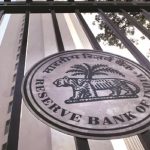The decision aimed to stimulate economic growth amid slowing GDP and controlled inflation
The Reserve Bank of India (RBI) reduced the repo rate to 6.25% in February 2025, marking the first rate cut in nearly five years. The decision aimed to stimulate economic growth amid slowing GDP and controlled inflation. The repo rate cut significantly influenced financial markets, lending activities, consumer spending, and corporate investments.
Understanding the Repo Rate and Its Role in the Economy
The repo rate refers to the interest rate at which commercial banks borrow funds from the RBI. By adjusting the repo rate, the RBI manages liquidity, inflation, and economic activity.
Higher Repo Rate: Borrowing becomes expensive, slowing down consumption and investment to control inflation.
Lower Repo Rate: Loans become cheaper, boosting demand, investment, and growth.
The 6.25% repo rate cut aims to make credit more affordable, encouraging business expansion, home purchases, and consumer spending.
Why the RBI Cut the Repo Rate
Several economic factors influenced the RBI’s decision to lower the repo rate:
1. Slowing Economic Growth
India’s GDP growth rate fell to 5.4% in the last quarter of 2024, down from 6.3% earlier in the year. A weaker global demand, reduced exports, and sluggish private investment slowed economic expansion. The RBI decided to cut interest rates to revive growth momentum by reducing the cost of borrowing.
2. Moderated Inflation Levels
Inflation remained within the RBI’s target range of 4-6%. Food prices stabilized after improved agricultural output, while energy prices softened due to lower global crude oil costs. With inflation under control, the RBI had room to support economic growth through a rate cut.
3. Global Monetary Easing
Central banks in major economies, including the US Federal Reserve and the European Central Bank, eased their monetary policies to support slowing global economies. The RBI aligned with this trend to keep Indian markets competitive for investors and maintain economic stability.
4. Credit Growth Concerns
Indian banks witnessed a slowdown in loan growth, especially in the housing and automobile sectors. Higher interest rates discouraged borrowers from taking loans, leading to lower credit expansion. A repo rate cut aimed to make loans more affordable and stimulate borrowing.
Immediate Market Reactions
Financial markets responded swiftly to the repo rate cut across stocks, bonds, and currency markets.
Stock Market Gains
Investors welcomed the rate cut, pushing stock indices higher.
BSE Sensex jumped 1.5%, with gains in banking, real estate, and consumer goods sectors.
Nifty 50 rose by 1.3%, reflecting optimism about cheaper credit boosting corporate earnings.
Sectors sensitive to interest rates, such as real estate, banking, and automobiles, saw the biggest gains. Lower borrowing costs increase corporate profitability and encourage expansion, making equities attractive.
Bond Market Rally
Government bonds experienced a price surge, reducing yields.
10-year Indian government bond yield dropped 20 basis points to 6.8%.
Investors purchased more bonds, expecting further rate cuts in the future.
Lower bond yields reduce borrowing costs for businesses and the government, supporting infrastructure and development projects.
Stable Currency Movement
The Indian rupee remained stable, trading around 86.50 per US dollar.
Markets had anticipated the rate cut, minimizing any shock to the currency.
Investors focused on global market trends and the US Federal Reserve’s next policy move.
If global central banks continue cutting rates, the rupee could maintain stability, preventing capital outflows from Indian markets.
Impact on Banking and Lending
Lending Rate Reductions
Banks responded to the repo rate cut by lowering lending rates across different loan categories.
Home loan interest rates decreased, making housing more affordable.
Auto loans became cheaper, increasing demand for cars and two-wheelers.
Personal loan rates fell, encouraging consumer spending on electronics, travel, and luxury items.
The transmission of rate cuts varies by bank, depending on liquidity conditions and funding costs.
Impact on Deposits
Fixed deposit rates declined slightly, reducing returns for savers.
Banks adjusted deposit rates downward to maintain profit margins.
Investors shifted funds to equities, mutual funds, and gold for higher returns.
Despite lower rates, bank deposits remained stable, supported by strong retail participation.
Consumer Behavior and Spending
Increase in Borrowing and Purchases
Consumers responded to lower rates by taking more loans.
Auto sales increased, with manufacturers reporting 10-15% higher bookings after the rate cut.
Housing demand surged, as lower home loan rates improved affordability.
Credit card spending rose, reflecting strong consumer confidence in the economy.
Real Estate Sector Gains
Developers benefited from lower borrowing costs, leading to:
Higher housing sales, especially in affordable and mid-segment categories.
Increased construction activity, boosting employment and raw material demand.
Real estate stocks rallied, as analysts raised earnings projections for property firms.
Corporate Response and Investment Trends
Expansion Plans and Capital Expenditure
Lower interest rates encouraged businesses to increase capital investments.
Manufacturing firms expanded operations, buying new machinery and setting up additional production units.
Infrastructure projects accelerated, supported by cheaper financing for road, rail, and energy sectors.
Companies announced new hiring plans, anticipating higher demand and revenue growth.
Debt Refinancing and Interest Savings
Businesses refinanced existing loans at lower rates, leading to:
Reduced interest expenses, improving profit margins.
Increased cash flow, allowing higher dividend payouts and shareholder returns.
Corporate bond issuances picked up, as companies locked in lower borrowing costs.
Future Projections: What’s Next After the Rate Cut?
Further Rate Cuts Possible
The RBI could reduce rates again if:
Inflation remains stable below 5%.
Economic growth needs further support to exceed 6% GDP growth.
Global monetary policy continues easing, prompting synchronized rate cuts.
Stock Market Outlook
Banking and real estate sectors may continue outperforming, supported by cheaper credit.
Consumption-driven stocks (FMCG, auto, retail) could see higher demand and stock price appreciation.
Real Estate and Credit Growth
Housing demand may rise further, boosting sales for developers and realty firms.
Bank credit growth may accelerate, helping the financial sector sustain earnings momentum.
Long-Term Economic Impact
Lower interest rates support private sector investment, driving industrial and job growth.
The rate cut stabilizes the economy, reducing volatility and uncertainty in financial markets.
A balance between growth and inflation management remains crucial for sustainable economic expansion.
The RBI’s repo rate cut to 6.25% created positive ripples across markets and the economy. Stock markets rallied, borrowing became more affordable, and businesses expanded investments. Consumers increased spending, benefiting auto, real estate, and retail sectors.
If inflation remains under control, the RBI could ease rates further, boosting long-term economic prospects. The repo rate reduction signals a proactive approach to sustaining growth and market confidence in 2025.






